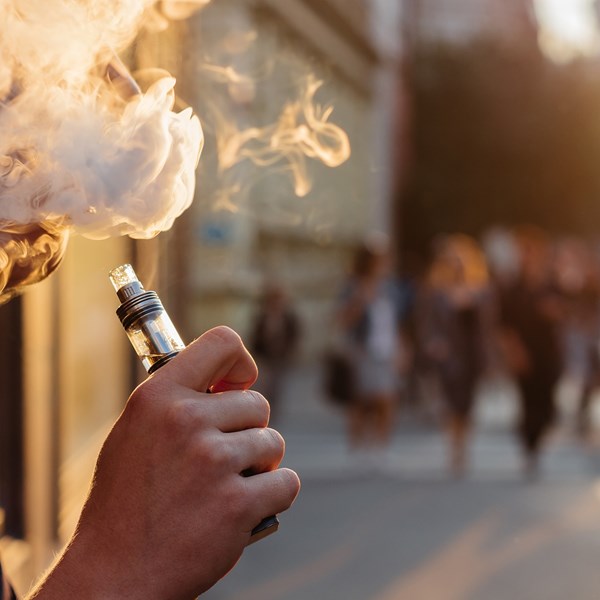The tobacco industry is facing a potentially critical threat from counterfeiting. Fake cigarettes, vapes, nicotine pouches and other types of tobacco-based products pose significant health risks for buyers and reputational damage for manufacturers.
In London alone, more than 114 million illegal cigarettes are sold annually with a value of more than £22m. Given the increasing duties being added to tobacco sales, the volume of products being made available and the enormous ingenuity counterfeiters are showing are set to continue to soar in line with demand, particularly in the current economic climate.
However, what consumers don’t realise is that ingesting counterfeit products massively increases the likelihood of contracting some of our most serious health complaints, most likely lung cancer. Legal tobacco products already contain over 5,000 chemicals, 60 of which are poisonous to humans; this number rises considerably in counterfeit products.
Add to this the amount of tax governments are missing out on. This is desperately needed revenue that would be reinvested in health, education and other public services.
In terms of spotting fakes, you can look out for unusual packaging that does not include the mandatory health warnings. Alternatively, the packaging could contain grammatical errors or spelling mistakes or appear discoloured. In many cases, the logo will be a close approximation but not quite right.
Consumers are continually warned to be careful, to beware of extremely low prices and sales situations that aren’t quite right, but unfortunately people cannot, it seems, resist a bargain, despite the fact it could seriously damage their health and fund criminal activity and even terrorism.
THE THREAT OF COUNTERFEIT VAPES
Counterfeit vapes pose similar health risks to counterfeit cigarettes, but again lower prices and high availability have led to rapid growth in fake vape products and this opportunity is not one that counterfeiters will pass on.
To give you an idea of the scale of the problem, in 2023, UK Trading Standards seized over 1 million illegal vape products. One raid in Salford in September 2022 uncovered over 77,000 illegal e-cigarettes. Meanwhile, in London, Westminster City Council reported seizing over 6,500 vapes in one day that were illegally being sold in Oxford Street sweet shops, and the Chinese vape manufacturer RLX Technology captured 60 million fake cartridges.
Again, the results are the same. There are health risks given the lack of quality control and use of potentially harmful materials. There is economic damage for those manufacturing genuine products and the governments relying on the duties levied on these types of products. There is also a high likelihood the money being made will be reinvested to support more serious criminal activity.
Moreover, there is a massive reputational risk for manufacturers.
As the fakes become more sophisticated, legitimate brand owners are suffering because it is increasingly difficult for consumers to distinguish between genuine and fake products, and if consumers’ health is damaged, the negative publicity will impact the entire market.
HOW CAN TOBACCO AND VAPE MANUFACTURERS COMBAT COUNTERFEITING?
While governments and law enforcement agencies are working hard to crack down on counterfeit tobacco products through seizures, raids, and penalties, much of the responsibility for combating fake products lies with the manufacturers.
Companies are being urged to implement anti-counterfeiting technologies as standard to help consumers identify genuine products and to track and trace products throughout the supply chain.
The most common form of anti-counterfeiting technology is overt authentication solutions. As the name suggests, overt means it is obvious and visible for consumers. This could involve QR codes, holograms or watermarks. This does offer some security, but there is also the argument that if the counterfeiters can fake a product, then surely they can also fake the visible security feature? The question is, of course, rhetorical because counterfeiters are becoming increasingly adept at reproducing visible security features, so what can manufacturers do?
Our answer is to take a more active stance in identifying how and where the fake versions of your products are being sold.
HOW CAN WE HELP TOBACCO AND VAPE MANUFACTURERS PROTECT THEIR BRANDS ONLINE?
While we can’t tackle street sales, we have devised a best-in-class platform that can patrol the internet for you. As online sales represent 12% of your market, counterfeit online sales could seriously impact your revenue and your brand.
Our platform is called iProvidence.
iProvidence provides you with your very own Eye of Providence, an all-seeing eye on the internet. It brings the very best of Potter Clarkson’s intellectual property expertise together with decades of strategic, tactical, and international brand protection experience to protect your corporate reputation and brand revenue.
Once you have signed up to iProvidence, our expert team will trawl the internet, monitoring and alerting you to potential infringements and then, if required, providing the advice you’ll need to enforce your IP rights. This will leave you to concentrate on your other responsibilities, safe in the knowledge that the online threats to your brands are being carefully and constantly monitored.
If you would like us to run a free initial summary report highlighting the online threats your brand is currently facing, please contact us today (letting us know the brand you want us to review and the best point of contact to send the report to), and one of our brand protection team will be in touch.






